Hands On With Moto Z Droid and Z Droid Force
Jun 9, 2016, 5:39 PM by Eric M. Zeman
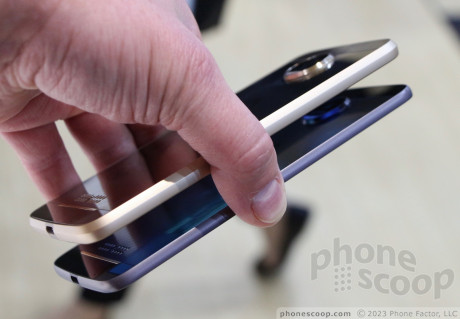
Motorola's new Droids take a modular approach that, at first glance, is compelling. Motorola hopes people will buy into the idea of enhancing their Moto Z Droid and Moto Z Droid Force with hot-swappable modules that add speakers, power, and more to the phones. Here is a first look at these exclusives for Verizon Wireless.
Lenovo's Moto Z Droid Edition and Moto Z Droid Force Edition smartphones may have the worst device names in history, but they were designed by some creative people who have a long-term vision for Lenovo's smartphone business.
The devices are modular, meaning they accept detachable and hot-swappable modules that add functionality. In theory, Moto appears to be following LG's footsteps. (The LG G5, which debuted in February, also supports modules.) Moto has clearly been thinking about its module design for some time and went so far as to call them its "platform for the future." In other words, Moto is serious about Moto Mods and they aren't just a gimmick meant to boost sales.
First the basics. The Z Droid and Z Droid Force are high-end Android smartphones. Both devices are made from high-quality metals and glass, and look identical, for all intents and purposes. The Force is noticeably thicker than the Z, but only when held next to its much more svelte brother. The basic outline is similar to the Moto X and Droid Turbo 2 / Maxx 2 we saw last fall. The phones have matching 5-megapixel cameras (with selfie flash!) on the front, as well as fingerprint sensors below the screen. There are no physical buttons on front other than the sensor. The sensor is small and squarish. It feels okay.
The Z is incredibly slim at 5.4mm. Lenovo says it is the thinnest smartphone out there, and maybe it is. The phone is still tall and wide in order to accommodate the large screen, but the weight is next to nothing. The materials are excellent, as is build quality. The metal frame that wraps around the outside edge is a bit sharp, but it doesn't hurt to hold the phone tightly. The Z will slip into any pocket with ease.
The left edge is entirely clean, but the right edge holds the screen lock and volume buttons. All three are easy to find and use; they offer excellent travel and feedback. The screen lock button has a texture to help set it apart from the smooth volume buttons. The USB-C port is on the bottom and the SIM/memory card slot is on top.
Curiously, Lenovo nixed the standard 3.5mm headphone jack from both phones. The company believes the industry is moving forward with USB-C for audio output, but it will include a Type-C adapter with the phones so people can use their existing headphones.
The Force is a couple millimeters thicker and a bit heavier, but is also still very thin. All the controls are identical.
I was impressed by the screen. The 5.5-inch quad HD resolution display is nice and bright. It is also protected by Moto's ShatterShield technology (Z Droid Force only). This improved version of ShatterShield is thinner and has narrower bezels while maintaining the same strength of the original. This makes for a brighter display than on last year's phone. Viewing angles are still a bit narrow and there's still an obvious blue shift when the phone is tilted, but again these traits are improved compared to the original ShatterShield.
The rear of each device is dominated by two things: the ridiculous camera module and the set of copper connector pins near the bottom.
In order to be compatible with the detachable modules, the camera bump on both phones is quite large. The circular camera bump protrudes by a few millimeters, as though someone stacked about three quarters on the back panel. The Z has a 13-megapixel sensor while the Force has a 21-megapixel sensor. They each have a two-tone LED flash. The metal rear panel has a visual (but not physics) pattern that comes and goes as you tilt the phone side-to-side. It doesn't quite resemble kevlar (something Motorola has used heavily over the years), but it's close.
Near the bottom you'll see a series of pins. They look like gold. This is where the Moto Mods connect with and talk to the Z and the Force. Lenovo engineers said designing this pins to be fail-safe and hot-swappable took incredible effort. Lenovo tested them extensively and doesn't believe they'll fail during the life cycle of the phone. Magnets are positioned in the four corners of the rear panel to hold the modules in place. You can put modules on the phone and remove them at will. There's no pulling out the battery (which is sealed inside, by the way), no removing the bottom hatch, none of that: simply drop the module on and go.
I tested the speaker module and projector module and it's quite impressive how quickly the phone recognizes that the module has been attached or removed. For example, I began playing music on the Z via the on-board speakers. I then attached the JBL stereo speaker module and the music instantly began to blast from the module. Ditto when I removed it — the music instantly reverted to the phone's internal speakers. It was hard to judge the quality of the music since the demo room was so loud, but the JBL speakers have a little kickstand that's pretty cool.
The projector is equally impressive. It is rather bulky, but will automatically begin projecting your YouTube or Play Movies videos onto the nearest wall. Video quality is limited to 480p (standard resolution) and the projector is not very bright, but it is certainly good enough to keep the kids entertained on a screen up to 70 inches.
Both the JBL speakers and projector have their own batteries and can be charged independently from the phone. The same goes for the battery cases on hand. Motorola also has a handful of purely decorative snap-on Moto Mods, such as nylon, wood, and leather so you can change up the appearance of your phone.
Motorola plans to release an SDK for Moto Mods later this year. The SDK will allow accessory makers like JBL create their own, branded Moto Mods for the Z Droid and Z Droid Force. Motorola truly hopes ti create an ecosystem around the Mods, which it envisions people will share between one another. Motorola strongly implied that future devices will support and/or be compatible with the Moto Mods, which is whit is so bullish on their potential popularity.
Based on my initial impressions, I'd say that Lenovo put a lot more thought into creating its modules than LG did for the G5. All the modules Lenovo showed at its event are final products of high quality. Motorola was smart to design the mods so they are easily attached and removed, which will be key in getting people to adopt them.
Motorola did leave us with a few lingering questions.
First, the phones will be exclusive to Verizon Wireless when they launch in late July or August. Motorola will eventually sell unlocked variants later this year, probably in September. It stinks that Motorola is launching the phones with a lengthy exclusive.
Second, we don't know anything about the pricing. Motorola did not share the price of either handset, nor the expected prices of the various Moto Mods. After spending time with the JBL speakers and projector, it's hard to believe the Mods will be cheap. Imagine Verizon will offer several different bundles, such as phone+speakers, phone+battery, or phone+removable skins.
Hopefully the answers to these questions will be revealed next month when the phones go up for preorder.
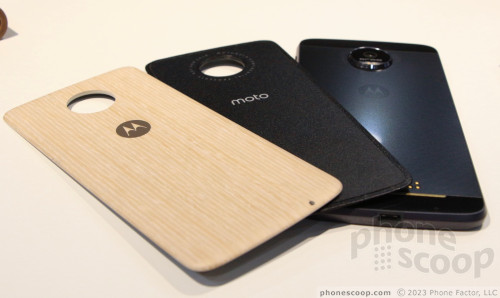
Here is a quick video tour:
Comments
No messages


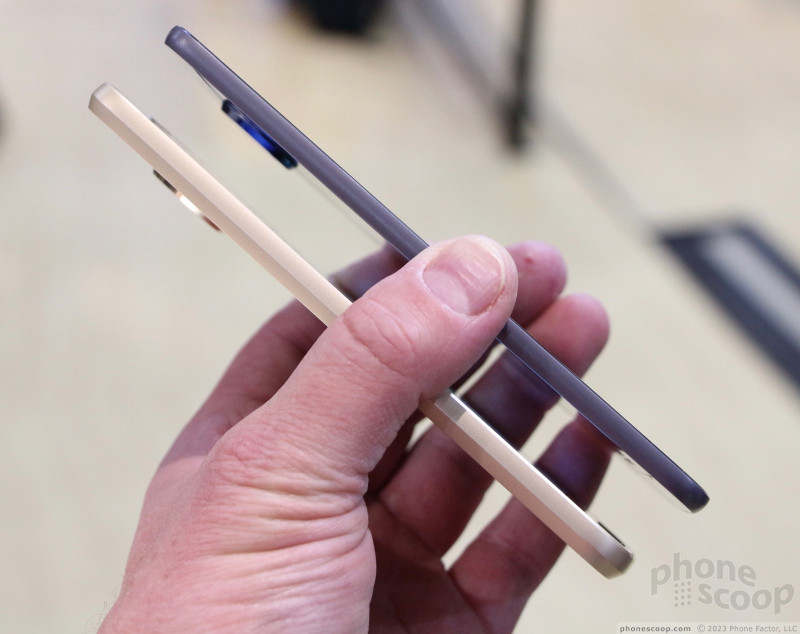














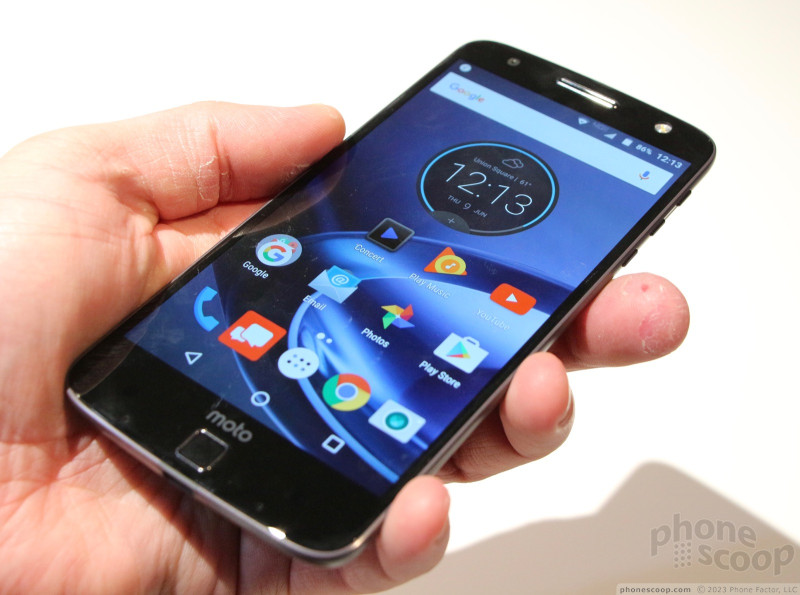









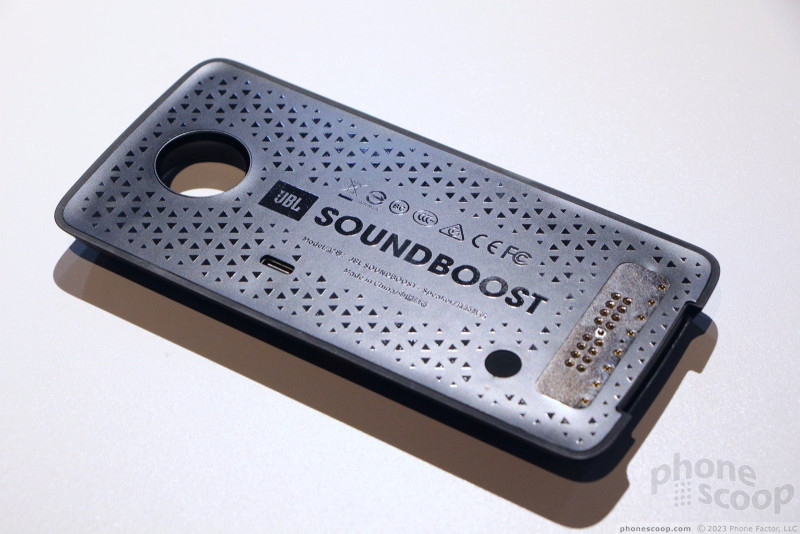
















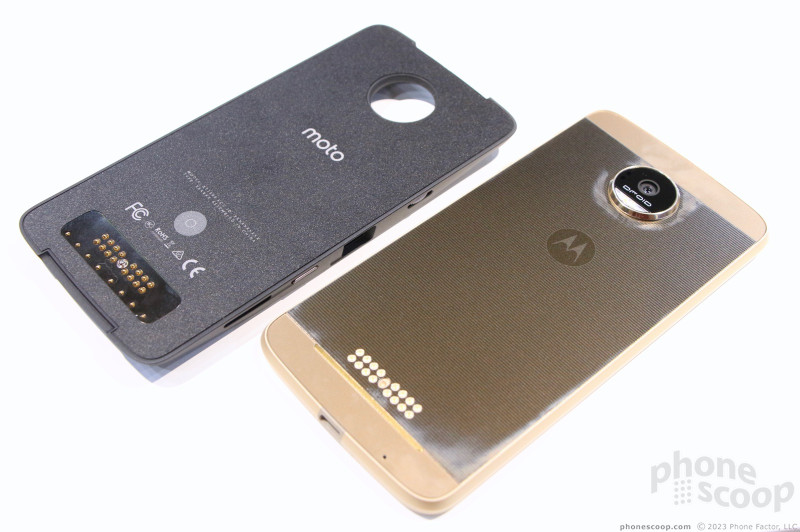








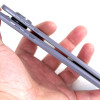 Review: Motorola Z Droid, Z Force Droid for Verizon Wireless
Review: Motorola Z Droid, Z Force Droid for Verizon Wireless
 Motorola Debuts New Droid Zs with Swappable Back Modules
Motorola Debuts New Droid Zs with Swappable Back Modules
 Motorola Announces Moto Mods Finalists
Motorola Announces Moto Mods Finalists
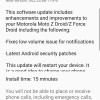 Verizon's Moto Z Droid Scores Security Update
Verizon's Moto Z Droid Scores Security Update
 Google Improves the Selection of Daydream VR Apps
Google Improves the Selection of Daydream VR Apps
 Motorola Moto Z Droid
Motorola Moto Z Droid
 Motorola Moto Z Force Droid
Motorola Moto Z Force Droid




